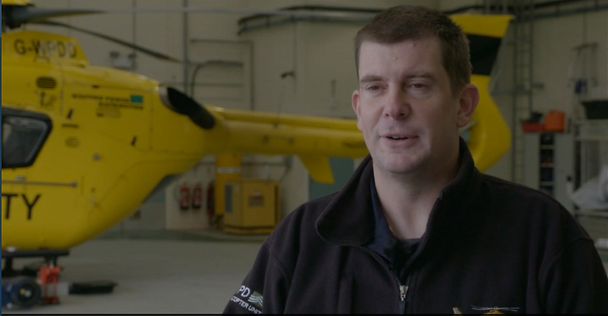Helicopters
Climbing away: Power line maintenance with the H135

Summary
- Western Power Distribution (WPD) in the United Kingdom owns power lines which supply electricity to 7.8 million customers over an area of 55,500 sq. km. Watch and read about their demanding work.
Western Power Distribution (WPD) in the United Kingdom owns power lines which supply electricity to 7.8 million customers over an area of 55,500 sq. km. The company’s helicopter unit, based at Bristol International Airport, is required to fly the entire network every two years reporting on the safety, reliability and condition of the overhead network.
Employing the unit’s five H135 helicopters, WPD undertakes surveillance flights on a daily basis covering, as a minimum, 36,000 km each year. A major advantage of the two-engine H135 is its capacity to carry underslung loads into hard-to-reach places. Typical operations include transporting poles that are needed on the sides of hills, or carrying wiring from one side of a valley to another.
The two-person crew of pilot and observer use the H135 to gain a better view of the lines and access difficult locations. Flying at approximately 20 kts so the observer can inspect the lines; the pilot relies on the auto trim feature to keep the aircraft stable—freeing him to focus on other tasks to ensure a safe flight. “The aircraft feeds a lot of information back to me,” said Tobias Heiermann, captain on the H135. “That helps get the mission done safely.”
A typical maintenance flight starts with a briefing to alert the crew to any specific work that needs attention, and a weather check. Once on site, the pilot descends to operate at between 40 and 150 feet above ground level for up to two and a half hours, at which point the helicopter refuels—and the crew gets a respite from the intensity of their task. After a five-hour flight, said Simon Richards, helicopter observer for WPD, “The H135 is a lot smoother and quieter than our previous helicopters, so the fatigue factor is almost nonexistent.”
Ample power and handling agility are needed for work of this caliber; an emergency would leave only the minimum amount of time for the aircraft to react. Richards relates an impressive display of the helicopter’s power reserves. “Our first introduction to the H135 was in a demonstrator aircraft,” Richards said. “The pilot demonstrated a one-engine failure from a hover. It was a reassuring feeling to see us climb away at 650 foot a minute on one engine—with four people on board.”
Heiermann concurs. “The beauty of the H135,” he said. “Is it looks after you.”